Types of turning cartridges
Heavy industry is currently gaining more and more momentum, because the production of parts, starting with a simple nut and ending with the components of a spacecraft, requires the use of new technologies for the manufacture of woodworking and metal-cutting equipment itself. And, of course, in this case, not the last place belongs to the lathe. In order to hold the part at a high speed of movement of the spindle, turning cartridges are used, the varieties of which depend on the purpose of the surface to be processed, the shape of the workpiece and the type of cutting.
Choice of turning chuck
Turning cartridges are intended for installation on special and universal lathes. The design of such a cartridge provides the transmission of a greater clamping force with much less torque on the clamping keys compared to spiral cartridges. All domestic and foreign manufacturers manufacture cartridges for lathes based on a hardened steel body, they include a set of hardened cams.
In order to select a lathe chuck for the machine, you need to know the following data:
- The outer diameter of the cartridge.
- Number of cams in the cartridge (2,3,4,6);
- Execution (with integral cams, with prefabricated);
- Type of fit (with a cylindrical centering belt and mounting through an intermediate flange, with mounting directly on the flanged ends of the spindles under the rotary washer according to GOST 12593-93, with mounting directly on the flanged ends of the spindles according to GOST 12595-93, with mounting on the flanged ends of the spindles of the Camlock type according to GOST 26651);
- Diameter of the landing hole;
- The diameter of the mounting holes;
- Number of mounting holes.
When buying turning cartridges, attention should also be paid to cams, they may have different methods of fixing workpieces. Remember that the cams are produced self-centering and with independent movement. More modern and expensive models of turning cartridges are equipped with a built-in pneumatic actuator, which is able to securely fix the workpieces. Such "consumables" are very often installed on machines for processing large-diameter pipe parts.
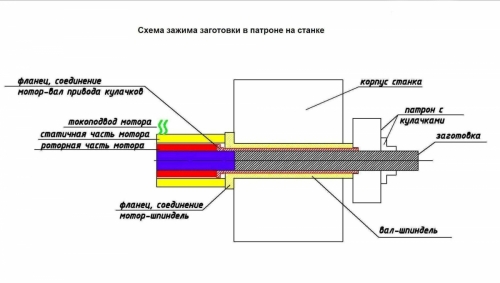
In addition to such specific characteristics, you need to know the height of the lathe chuck, the type of stroke of the rod and cam, the height from the edge to the main cam. It will not be superfluous if you tell the seller the total clamping force in the cams and the maximum possible rotation speed. You can find this information in the technical data sheet of the machine used. Sometimes the marking of the necessary turning chuck is also indicated there.
Classification of turning cartridges
Machine tools with turning cartridges are represented by two-, four- and three-cam cartridges with manual and mechanized clamping. Two-cam self-centering cartridges are used for various shaped castings. Round and hexagonal blanks are usually fixed in three-cam cartridges. Four-cam cartridges are designed for rectangular and non-symmetrical parts, as well as bars of square cross-section. Let's take a closer look at the main types of cartridges for lathes.
Collet cartridges
The main working element of the collet chuck is a sleeve with several axial slots that divide it into petals, which, depending on the diameter of the workpieces, there are three, four or six. Such petals play the role of cams that compress the part that is inserted into the sleeve. Collet are feeding and clamping. The feeding collet is a hardened steel sleeve with three incomplete cuts that form petals with the ends pressed together. Clamping one-piece collet is made in the form of a sleeve with spring-type petals.
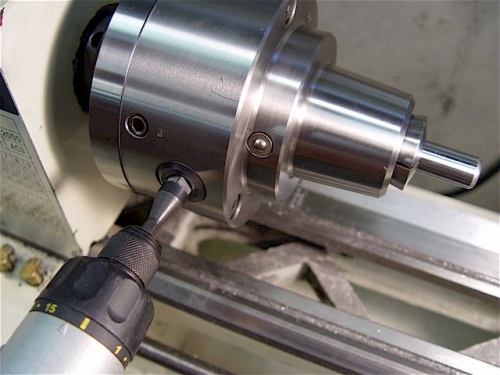
The coupling increases due to the narrowing of the slots during the procedure of pressing the collet into the cartridge with a conical part. The device of a lathe chuck with a collet from a technical point of view has some advantages over other clamping devices – the part that is fixed in the collet has radial runouts of the product so insignificant that they can be safely neglected.
The predominant scope of use of such cartridges is the clamping of cylinders, short rods or bushings for processing. They are also used for fixing cutters, drills, wrench tips and taps. Collet cartridges are popular for secondary clamping of the workpiece with a treated surface. If the profile of the processed product does not match the shape of the collet hole, it is customary to use replaceable inserts.
Lever cartridges
Lever cartridges can be used in small-scale production, because the procedure for their changeover is simple and capable of securing workpieces in the widest range of diameters. A disk is placed on the centering surface in the cartridge housing, on the side of which there is an Archimedean spiral carving, a conical toothed crown is cut on the other side.
The attachment of the workpiece in the lever turning chuck comes from a hydraulic drive that moves the rod with a clutch. The rods with crackers that form a double-arm lever are able to rotate around the center of the cylindrical section of the cracker, move the sliders with cams to the center and clamp the workpiece. The changeover of the lever chuck is simple and boils down to the simultaneous movement of all cams to the required radial position using a key.
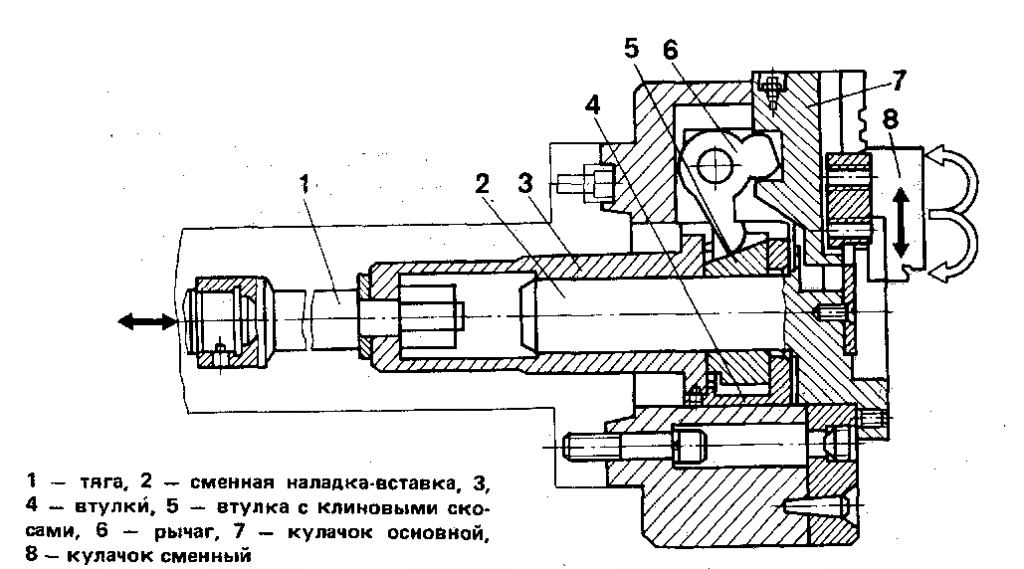
This operation takes no more time than the procedure for fixing the workpiece in a three-cam chuck, which has a non-mechanized drive. Due to the movable elements that are provided in the drawings of turning cartridges and connect the sliders with the main cams, the centering errors of the workpiece are significant, therefore lever cartridges are used mainly in roughing operations.
Wedge cartridges
Wedge cartridges demonstrate high accuracy of centering the workpiece, rather than lever cartridges. The workpiece is fixed by means of a pneumatic or hydraulic drive, which is placed at the back at the end of the sloping spindle. The three main cams and the cams that are connected to them, with the axial movement of the wedge, move in the radial direction and clamp the product.
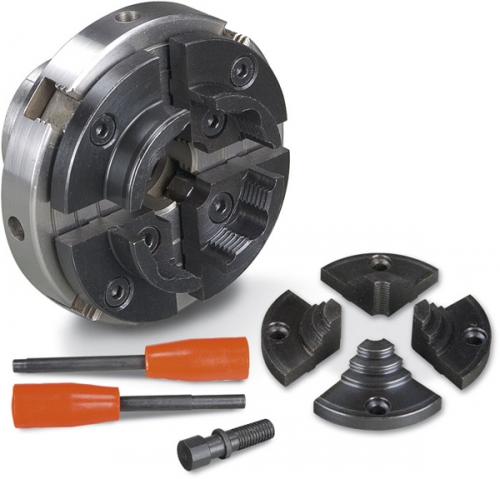
For CNC machines, where a large batch of parts is processed, it is important to be able to quickly assemble the lathe chuck and readjust the chuck to the other diameter of the workpiece being fixed, which lasts no more than 2 minutes. For machines with GPS and CNC, designs of cartridges with automatic readjustment to a certain diameter of the workpiece are being developed. The use of high-quality heat-treated steel for the manufacture of the main parts increases the reliability, durability and accuracy of the cartridge.
Membrane cartridges
The highest precision of centering of parts is provided by the diaphragm cartridge. Elastic membranes are bolted to the flange of the cartridge. Such a membrane has from 3 to 8 cams with replaceable sponges. Some designs of membrane cartridges have cams that are bolted to the membrane. The workpieces are installed all the way into the unclenched jaws with the end into the pins, the pneumatic drive is turned off, the membrane tries to return to its original state and clamps the workpiece with the sponges.
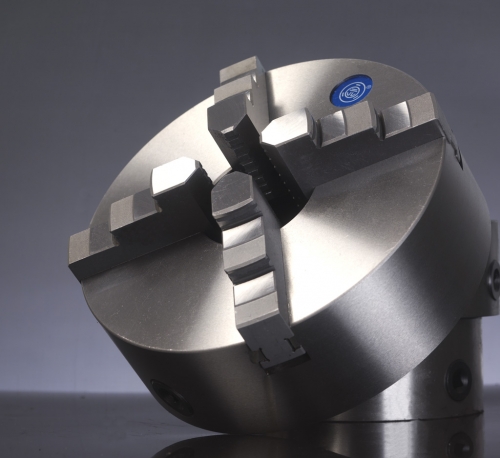
A large number of cams on the membrane turning chuck contributes to the centering of the product with an accuracy of 0.05 millimeters or higher. Due to the small strength of the workpiece attachment, such cartridges are used in finishing operations with a small section of the chip being removed. When installing blanks in a diaphragm cartridge, the pneumatic actuator is used exclusively for diluting the cams, so performing actions with such a cartridge is safe. In the event of a sudden decrease in pressure in the network during processing, the workpiece is still securely held in the cartridge by the elastic forces of the membrane.
Three-cam cartridges
Cartridges that have three radial radial grooves have such a characteristic feature – centering, which occurs simultaneously with the fixing of the workpiece. The cams move in a spiral synchronously under the action of a force applied at one point using an end lever or a key, depending on the transmission mechanism used in the design of the cartridge.
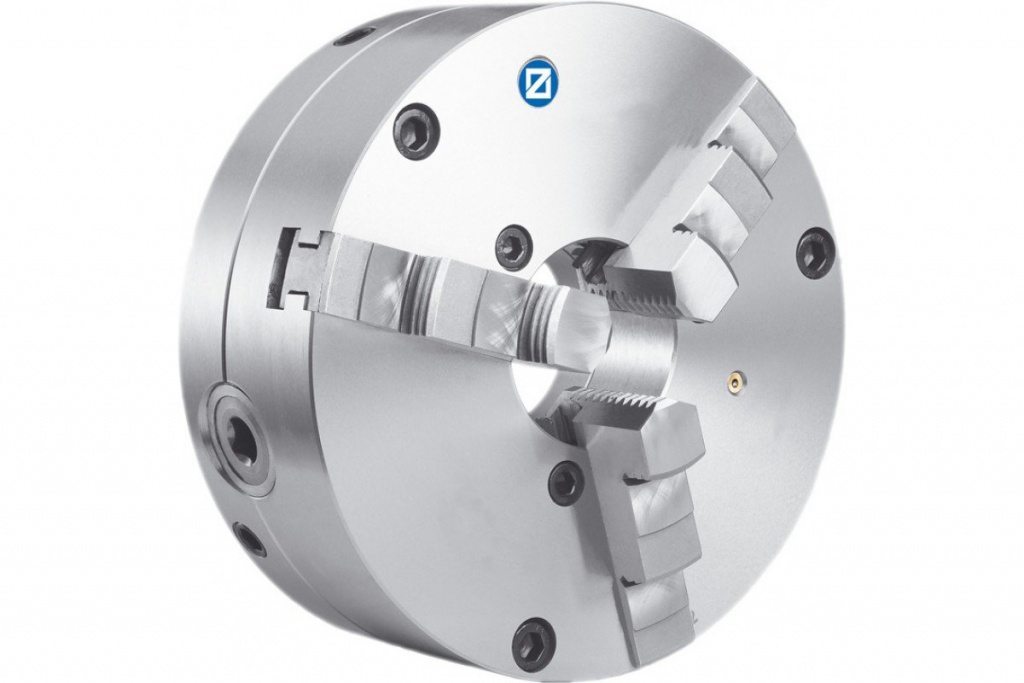
In the design of the three-cam lathe chuck, cams of different types are used. Straight lines are installed in the groove outwards by steps, and the part is clamped from above by the inner surfaces or the outer surface of the steps on the inner surface of the product. The return cams are arranged in steps to the center and are used for clamping workpieces with a large diameter. The cams are marked with an ordinal number, which must be followed when mounting into the cartridge.
Four-cam cartridges
Four-cam cartridges are characterized by the presence of four grooves that are radially directed into which the clamping cams are installed. For the movement of each cam, a separate mechanism is provided in the design of the cartridge, which makes it independent of the movement of the others. The purpose of a four-shaft wood lathe chuck with independent cams is to fix and hold when processing workpieces with a non-cylindrical shape, or when the axis of the cylindrical surface that is being processed does not coincide with the axis of attachment.
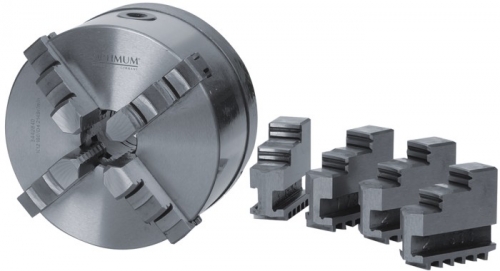
The cams are installed in the reverse and straight positions. The reverse position is used if you need to clamp a workpiece with a large cross-sectional area. Four-cam self-centering cartridges are also used to secure bars that have a square cross-section.
Now you can safely give your preference in favor of one of the varieties of turning cartridges. It is recommended to be guided mainly by the environment of use of products, the material and shape of the blanks, which will be fixed with a lathe chuck.
Materials used:
-
JSC "Grodno plant of turning cartridges "BelTAPAZ" http://beltapaz.com /
- http://strport.ru/instrumenty/vybor-i-vidy-tokarnykh-patronov
